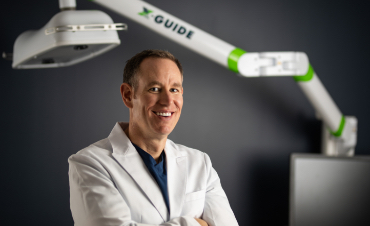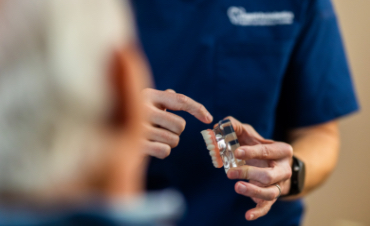Gum disease is a condition that affects nearly everyone at some point in their life. It occurs when bacteria cause inflammation of the gums and then move below the gum line and begin impacting the tissue and bones that hold teeth in place. Gum disease may start as gingivitis and progress into periodontitis. Without proper treatment, gum disease can lead to tooth loss and bone deterioration.
What Causes Gum Disease?
The mouth is naturally full of bacteria, some good and some bad. Bacteria create a sticky film on the teeth called plaque. If plaque is not removed daily through brushing and flossing, it can harden into tartar. Tartar can cause the gums to become red and inflamed and bleed more easily during brushing.
As the bacteria spread, it can cause the gums to pull away from the teeth creating pockets where infection can develop. This infection can damage the bones that support the teeth and lead to loose or missing teeth.
Common risk factors for gum disease include:
- Poor oral hygiene
- Genetics
- Hormonal changes
- Diabetes
- Smoking
- Certain medications that reduce saliva production
What are the Signs of Gum Disease?
The early signs of gum disease can be subtle and easy to miss or ignore. However, if you notice any of these changes in your oral health, you should schedule an appointment with a dental professional. Symptoms include:
- Bleeding gums
- Red or inflamed gums
- Persistent bad breath
- Tooth sensitivity
- Receding gums
- Pain while chewing
- Loose teeth
Preventing Gum Disease
One of the best methods of prevention is daily brushing and flossing. Use a soft-bristled toothbrush to brush your teeth at least twice a day, with one of those times being before you go to bed. Then use floss or an interdental pick to carefully floss between all of your teeth to remove any built-up plaque or food particles.
Regular dental exams and cleanings can also identify problems early on and remove any tartar that has formed. This can promote better gum health and reduce the risk of gum disease. Your periodontist may also recommend changes to your diet or lifestyle, such as eating fewer starchy or sugary foods or quitting smoking.
Treating Gum Disease
If caught early, gingivitis is reversible. Following a thorough cleaning and with daily brushing and flossing, you should notice your gums heal within a week or two. Treating periodontitis can be more challenging. Oftentimes a deep cleaning is performed, as well as scaling and root planing to scrape away tartar and create a smooth surface for the gums to reattach to the teeth. If you have deep pockets around your teeth where bacteria collect, flap surgery may be performed to minimize this gap and tighten the fit of the gums around the teeth.
Do not ignore changes to your teeth and gums. Have them evaluated and treated by a dental professional such as Derby City Dental Specialists. Dr. Ryan Clagett is happy to work with you to address your concerns and improve your oral health.




